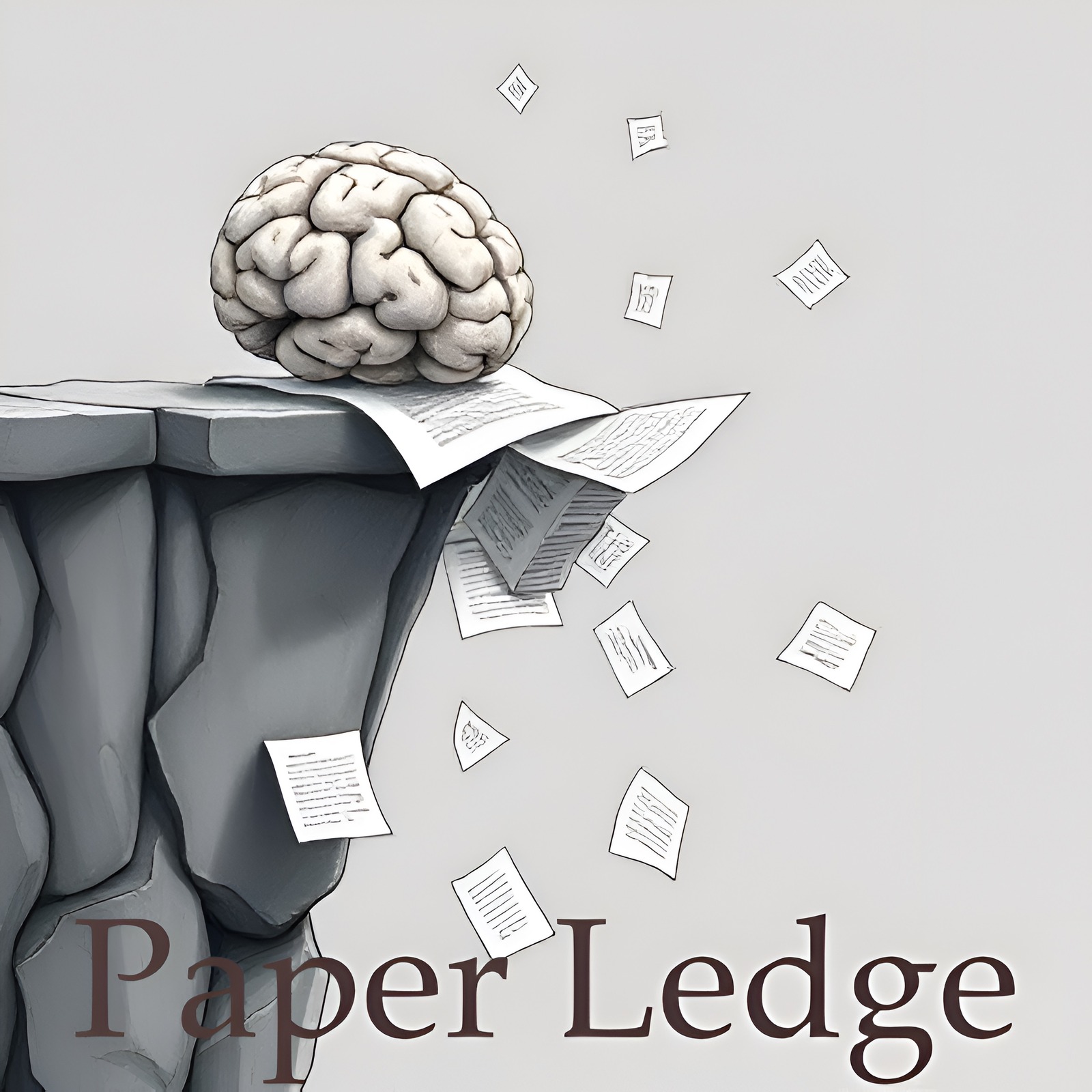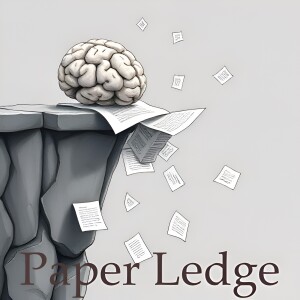PaperLedge

PaperLedge where research meets storytelling is a revolutionary podcast where cutting-edge research meets AI-powered storytelling. Hosted by the Ernis, whose blend of gentle reassurance, cosmic wonder, explanatory clarity, and enthusiastic charm makes complex research accessible to everyone. Each episode, Ernis transforms the latest academic papers into engaging, jargon-free audio experiences that deliver key insights in digestible formats. Whether you’re a researcher seeking interdisciplinary perspectives, a student supplementing your studies, or simply curious about scientific breakthroughs, PaperLedge has something for you.
Episodes
Episodes



Thursday Oct 02, 2025
Thursday Oct 02, 2025
Hey PaperLedge learning crew, Ernis here, ready to dive into some seriously cool research! Today, we're tackling a paper that asks a big question: Can those super-smart AI language models, the ones acing math tests and writing code, actually help physicists solve real-world, cutting-edge problems?
Think of it this way: these language models are like super-talented students who've crammed for all their exams. They can spit out facts and figures like nobody's business. But can they actually think like a physicist wrestling with the mysteries of the universe?
That's where this paper comes in. Researchers have created something called CritPt, pronounced "critical point." It's basically a super-challenging test designed to see if these AI models can handle the kind of complex, open-ended problems that physicists face every day.
Now, this isn't your typical textbook problem. We're talking about problems ripped straight from the headlines of modern physics research, everything from:
Condensed Matter Physics: Exploring new materials and their bizarre properties.
Quantum Physics: Delving into the weird world of atoms and subatomic particles.
Astrophysics: Unraveling the secrets of black holes and distant galaxies.
And much more!: Including high energy physics, mathematical physics, statistical physics, nuclear physics, nonlinear dynamics, fluid dynamics and biophysics.
CritPt is made up of 71 of these massive research challenges. But, to give the AI a fighting chance, they also broke each big challenge down into smaller steps, like checkpoints, totaling 190 tasks. Think of it like climbing a mountain – you need to conquer smaller hills before you reach the summit.
Here's the really cool part: these problems weren't pulled from textbooks. They were created by over 50 real, working physicists, based on their own research! That means these are problems that nobody has solved yet, pushing the AI to truly reason and problem-solve.
So, how did the AI do? Well, the results were… humbling. Even the best language models, like GPT-5, only managed to solve a tiny fraction of the full research challenges. We're talking around 4% success rate for the base models, rising to about 10% when the models were allowed to use coding tools.
"While current state-of-the-art LLMs show early promise on isolated checkpoints, they remain far from being able to reliably solve full research-scale challenges."
That's a pretty big gap! It shows that while these AI models are impressive, they still have a long way to go before they can truly assist physicists in tackling the biggest scientific challenges.
Why does this matter? Well, imagine if AI could actually help physicists make breakthroughs faster. We could discover new energy sources, develop revolutionary technologies, and unlock the secrets of the universe at an accelerated pace. This research highlights where AI needs to improve to make that dream a reality. The researchers are, in essence, drawing a map for future AI development in the sciences.
This research also emphasizes the importance of carefully designed benchmarks for AI. CritPt is like a rigorous training ground that specifically targets the skills physicists need in their daily work. It's not just about memorizing facts; it's about creative problem-solving.
So, what does this all mean for you, the PaperLedge listener?
For students and aspiring scientists: This shows you the kinds of skills that are truly valued in research. It's not just about knowing the formulas; it's about being able to apply them creatively to solve novel problems.
For AI developers: This research provides a clear roadmap for building AI tools that can actually assist scientists. It highlights the specific areas where current models are lacking.
For everyone else: It's a fascinating glimpse into the future of scientific discovery and the potential (and limitations) of AI.
Here are a couple of things I'm pondering after reading this paper:
If AI struggles with these open-ended physics problems, what other complex, real-world domains are they also likely to struggle with?
What specific types of reasoning skills are missing from current AI models that prevent them from solving these physics challenges? And how can we teach them those skills?
That's it for this week's deep dive! I hope you found this research as fascinating as I did. Until next time, keep learning, keep questioning, and keep exploring the PaperLedge! Credit to Paper authors: Minhui Zhu, Minyang Tian, Xiaocheng Yang, Tianci Zhou, Penghao Zhu, Eli Chertkov, Shengyan Liu, Yufeng Du, Lifan Yuan, Ziming Ji, Indranil Das, Junyi Cao, Yufeng Du, Jinchen He, Yifan Su, Jiabin Yu, Yikun Jiang, Yujie Zhang, Chang Liu, Ze-Min Huang, Weizhen Jia, Xinan Chen, Peixue Wu, Yunkai Wang, Juntai Zhou, Yong Zhao, Farshid Jafarpour, Jessie Shelton, Aaron Young, John Bartolotta, Wenchao Xu, Yue Sun, Anjun Chu, Victor Colussi, Chris Akers, Nathan Brooks, Wenbo Fu, Christopher Wilson, Jinchao Zhao, Marvin Qi, Anqi Mu, Yubo Yang, Allen Zang, Yang Lyu, Peizhi Mai, Xuefei Guo, Luyu Gao, Ze Yang, Chi Xue, Dmytro Bandak, Yaïr Hein, Yonatan Kahn, Kevin Zhou, John Drew Wilson, Jarrod T. Reilly, Di Luo, Daniel Inafuku, Hao Tong, Liang Yang, Ruixing Zhang, Xueying Wang, Ofir Press, Nicolas Chia, Eliu Huerta, Hao Peng



Thursday Oct 02, 2025
Thursday Oct 02, 2025
Hey PaperLedge crew, Ernis here, ready to dive into some seriously cool research! Today, we're tackling a paper that's all about how we can make AI assistants way, way better at using tools. Think of it like this: your AI should be able to not just know about tools, but actually use them in a smart, coordinated way to solve complex problems.
The paper's called FuncBenchGen, and the core idea is to create a kind of AI obstacle course for these AI assistants. We want to see if they can figure out how to chain together different tools, in the right order, to get the job done. Imagine you need to bake a cake. You can't just throw all the ingredients in at once! You need to mix the wet ingredients, then the dry, then bake at the right temperature. This paper is trying to build challenges like that for AI.
Now, the researchers realized that existing tests for AI tool use weren't that great. They weren't really controlling the difficulty, and it was hard to be sure the AI hadn't cheated by seeing the answers beforehand. So, they built FuncBenchGen, a system for automatically generating these tool-use puzzles. It's like a puzzle factory specifically for AI.
Here's the key: they represent tool use as a function-dependency DAG (don't worry about the jargon!). Just picture a flowchart where each box is a tool (like a function), and the arrows show how the output of one tool feeds into another. The AI's job is to figure out the correct path through this flowchart to reach a specific goal. For example:
Imagine you have a tool that gets the current weather.
Another tool that suggests clothing based on the weather.
And a final tool that books a rideshare.
The AI needs to use the weather tool first, then feed that information into the clothing tool, then use that output to potentially get the rideshare, depending on if it is raining or not. FuncBenchGen lets researchers control how many tools are involved, how complicated the dependencies are, and even throw in some "distractor" tools that aren't needed, like adding extra ingredients to the baking scenario that don't belong in that recipe.
So, what did they find when they put these AI assistants to the test? Well, the models designed for reasoning did better than the general-purpose ones, with GPT-5 leading the pack. But, performance dropped off dramatically as the tool sequences got longer and more complex. The AIs also struggled when there were extra, unnecessary tools thrown into the mix – kind of like having too many tabs open on your computer and getting distracted!
Here's a critical thing they noticed: the AIs often made perfectly valid function calls – they used the tools correctly in terms of syntax – but they messed up the data being passed between them. They'd use the wrong value for an input, or forget what the value was from a previous step. It's like forgetting how much sugar you already added to the cake batter!
This led the researchers to a simple but surprisingly effective fix. They tried explicitly reminding the AI of the values of all the variables at each step. Think of it as writing down how much sugar you've added after each step of the recipe. And guess what? This simple reminder made a huge difference, boosting performance significantly!
"This lightweight change yields substantial gains across models. e.g., yielding a success rate improvement from 62.5% to 81.3% for GPT-5."
So, why does this research matter? Well:
For AI developers: It gives us a better way to test and improve the tool-using abilities of AI assistants.
For businesses: It points the way to building more effective AI-powered automation systems.
For everyone: It brings us closer to having AI assistants that can truly help us with complex, multi-step tasks in our daily lives.
Think about automating your taxes, or planning a complex trip with multiple destinations and activities. All this becomes more possible with better tool using AI.
Now, a couple of things I'm wondering about:
How can we make these "reminders" even more efficient? Is there a way to get the AI to remember the relevant information without overwhelming it with details?
Could we train the AI to anticipate the information it will need in the future, so it doesn't need to be constantly reminded?
What happens when the tools themselves are unreliable or provide faulty data? How can the AI learn to detect and compensate for that?
That's it for this episode! Let me know your thoughts on this research. Until next time, keep learning, PaperLedge crew!Credit to Paper authors: Seiji Maekawa, Jackson Hassell, Pouya Pezeshkpour, Tom Mitchell, Estevam Hruschka



Thursday Oct 02, 2025
Thursday Oct 02, 2025
Hey PaperLedge crew, Ernis here, ready to dive into another fascinating piece of research! Today, we're tackling a paper that gets to the heart of how those super smart AI models, like the ones powering chatbots, actually learn to learn. It's all about something called in-context learning (ICL).
Now, ICL is basically the superpower that allows these models to figure out new tasks without needing to be completely retrained. Think of it like this: imagine you're teaching someone how to bake different kinds of cookies. Instead of giving them a brand new recipe and instructions every time, you give them a few examples upfront – a chocolate chip recipe, a peanut butter recipe – and then ask them to figure out how to bake, say, oatmeal raisin cookies. They're learning in context from the examples you've provided.
This paper digs deep into why ICL works, and more importantly, when it works well. The researchers used a simplified model – a kind of "baby Transformer" – to understand the underlying math. They were essentially trying to crack the code of what kind of training data leads to successful ICL.
One of the key things they discovered is that it all comes down to alignment. Think of it like this: If you trained our hypothetical cookie baker only on savory biscuit recipes, they might struggle when asked to make sweet cookies. The skills learned aren't aligned with the new task. The paper introduces a new way to measure this alignment, showing that how well the pre-training tasks match the testing tasks is a really good predictor of how well ICL will perform.
But here's where it gets really interesting: the researchers found that there's a trade-off. You might think that the more diverse the training data, the better, right? Like, train our cookie baker on everything from bread to cakes to pies. But the paper showed that too much diversity can actually hurt performance if the tasks aren't well-aligned. It's like spreading yourself too thin! There's a sweet spot between specializing in a narrow set of tasks and generalizing to a wide range of them.
"Train-test task alignment [is] a key determinant of generalization in ICL."
So, what does this mean for us? Well, for AI developers, this research gives valuable insights into how to design better training datasets for these large language models. It suggests that carefully curating data to ensure alignment between pre-training and the kinds of tasks you want the model to perform is crucial.
But even if you're not an AI researcher, this paper highlights the importance of context in learning, something we experience every day. Whether it’s learning a new skill at work, understanding a news article, or even just navigating a social situation, the context we have shapes how well we can adapt and learn.
Here are a few things I was thinking about while reading this paper:
Could this alignment measure be used to automatically curate training data, identifying the most relevant examples for a given task?
Does this trade-off between specialization and generalization explain why some AI models are great at specific tasks but struggle with others?
How can we, as learners ourselves, be more conscious of the context we're using to learn new things and ensure it's actually helpful?
That's all for this episode, PaperLedge crew! Hope this sparked some curiosity and gave you a new perspective on the magic behind AI. Until next time, keep learning!Credit to Paper authors: Mary I. Letey, Jacob A. Zavatone-Veth, Yue M. Lu, Cengiz Pehlevan



Thursday Oct 02, 2025
Thursday Oct 02, 2025
Hey PaperLedge learning crew, Ernis here! Today, we're diving into a fascinating paper that tackles a really tricky problem: making our voice assistants, like Siri or Alexa, actually smart when we talk to them.
The paper introduces something called VERA, which stands for Voice Evaluation of Reasoning Ability. Think of VERA as a rigorous exam for voice assistants. But instead of just asking simple questions, it throws complex reasoning problems at them, things that require actual thought and understanding.
Now, these aren’t just made-up questions. The researchers took tried-and-true reasoning tests that are usually given in text format (like on a computer screen) and adapted them for voice. They cover five key areas:
Math: Problems that require calculations and logic.
Web: Questions that need the assistant to search the internet for information and then reason about it.
Science: Testing scientific knowledge and reasoning skills.
Long-Context: Challenges that require remembering and understanding information from a longer conversation.
Factual: Assessing the ability to recall and apply factual information accurately.
Here's the kicker: the researchers found a huge gap between how well these AI systems do when they read text versus when they hear it. For example, in math problems, the best text-based AI could get almost 75% accuracy, but the voice-based version of the same AI only managed about 6%! Overall, the best text-based models scored 54%, whereas voice-based scored just 11.3%.
Think of it like this: it's as if your super-smart friend who aced all their exams suddenly becomes completely tongue-tied and confused when you ask them the same questions out loud!
Why is this happening? Well, the researchers explored a few possibilities. Maybe the AI needs more "thinking time"? They gave the voice assistants extra processing time, but it didn't really help much. They even tried a more complex system where one part of the AI focuses on understanding the question and another part focuses on generating the answer. This did improve things a bit, but it still wasn't close to the text-based performance. Plus, it introduced new problems, like the AI getting confused about who said what.
One of the most interesting findings is that when these voice systems try to be fast, they become much less accurate. It’s like they’re trading intelligence for speed. The systems that prioritize quick responses tend to cluster around a dismal 10% accuracy rate.
This leads to some really important questions:
Are we sacrificing too much accuracy in the pursuit of real-time responsiveness with our voice assistants?
What are the fundamental differences between how AI processes text versus voice, and how can we bridge that gap?
Could a new architectural approach, perhaps one that’s radically different from existing models, be the key to building truly intelligent voice assistants?
The VERA benchmark is valuable because it gives researchers a standardized way to test and compare different voice AI systems. It helps to pinpoint exactly where these systems are struggling and provides clues on how to improve them. It's a step towards creating voice assistants that are not only fluent but also capable of reliable reasoning. In the long run, this could mean more helpful and insightful interactions with our devices.
So, why should you care? Well, whether you're a developer working on AI models, a product manager thinking about the future of voice interfaces, or simply someone who relies on voice assistants every day, this research highlights the current limitations of these technologies and points towards exciting areas for future innovation. It reminds us that while voice assistants have come a long way, there's still a significant journey ahead before they can truly understand and respond to us in a meaningful way.
Until next time, keep learning, keep questioning, and keep exploring the PaperLedge!Credit to Paper authors: Yueqian Lin, Zhengmian Hu, Qinsi Wang, Yudong Liu, Hengfan Zhang, Jayakumar Subramanian, Nikos Vlassis, Hai Helen Li, Yiran Chen



Thursday Oct 02, 2025
Thursday Oct 02, 2025
Hey PaperLedge crew, Ernis here, ready to dive into some cutting-edge AI research! Today, we’re unpacking a paper about how well AI systems can really understand the connection between images and text. Think of it like this: you see a picture of a cat chasing a laser pointer, and you read the sentence, "The feline predator is in hot pursuit of its red nemesis." A human gets that instantly, right?
But how do we know an AI understands that connection, instead of just matching the words "cat" and "feline"? That's the problem this paper tackles. Current tests are often too easy, like matching objects in a picture to words – "Yep, that's a car. The text says car. Good job, AI!" The researchers argue this is like testing if someone understands Shakespeare by asking them to point at the letters in the words.
This team created a new, much tougher test called MR2-Bench. Think of it as an advanced placement exam for AI multimodal understanding.
So, what makes MR2-Bench so special?
Reasoning Required: It forces the AI to reason about what it sees and reads, not just match keywords. It asks questions that require logical, spatial, and even causal thinking. It's like showing an AI a diagram of a Rube Goldberg machine and asking it to predict what will happen at the end.
Diverse Data: It uses a variety of visuals, not just simple photos. We're talking diagrams, visual puzzles... things that require a deeper level of interpretation.
Complex Scenarios: It throws complex queries at the AI and presents documents that contain multiple images. The tests mimic real-world applications more accurately.
To put it simply, imagine an AI trying to understand a complex recipe with both written instructions and pictures. Can it figure out the order of operations? Can it identify the ingredients in the images and match them to the text? Can it infer what will happen if it skips a step? That’s the kind of challenge MR2-Bench presents.
The researchers created 1,309 of these challenging queries, pulling from existing datasets and hand-crafting new ones. Here's the kicker: the best AI models, the ones that ace the easy tests, completely bomb on MR2-Bench. One leading model, which scored almost 78% on an existing benchmark, only got under 10% on this new one! That’s a huge difference.
“Despite achieving strong results on existing benchmarks, current state-of-the-art models still struggle on MR2-Bench... This substantial performance gap highlights both the increased challenge posed by our benchmark and the pressing need for further advances in reasoning-intensive multimodal retrieval.”
So, what does all this mean for you and me? Well, if you're in AI research, this highlights where the real work needs to be done. We need AI that can truly understand the world, not just parrot back information. If you're someone who uses AI-powered tools, this explains why sometimes those tools get things hilariously wrong. The ability to reason about the world through multimodal inputs is not there yet, but now, thanks to this team, we have a better yardstick to measure progress. And the data and code are available for anyone to use!
Think about the implications! Better AI understanding of images and text could lead to:
More accurate search engines that understand the context of your queries.
More helpful virtual assistants that can truly "see" and "understand" your environment.
Improved tools for education and accessibility.
Now, a couple of questions that popped into my head while reading this paper:
Given how poorly current models perform on MR2-Bench, what specific architectural changes or training strategies do you think are most promising for improving reasoning abilities in multimodal AI?
Could this type of benchmark be adapted to evaluate AI's understanding of other senses, like audio or even smell? What would that look like?
Alright crew, that’s it for this paper. I hope it gave you some food for thought! Until next time, keep learning!Credit to Paper authors: Junjie Zhou, Ze Liu, Lei Xiong, Jin-Ge Yao, Yueze Wang, Shitao Xiao, Fenfen Lin, Miguel Hu Chen, Zhicheng Dou, Siqi Bao, Defu Lian, Yongping Xiong, Zheng Liu



Wednesday Oct 01, 2025
Wednesday Oct 01, 2025
Hey PaperLedge crew, Ernis here, ready to dive into some seriously cool research! Today, we're tackling a paper that's all about teaching computers to "see" math problems and then solve them. Think of it like this: you're trying to help a friend with a word problem, but they can only see a picture of the problem, not read the actual words. That's the challenge we're dealing with.
Now, we've got these awesome AI models that are amazing at math, but they usually work with text. And we have other AI models that can "see" images and describe them in words. The problem? The descriptions these vision models give are often...well, let's just say they're not detailed enough for the math whiz AI to understand the problem properly.
Imagine you're looking at a picture of a pizza cut into slices, and the AI just says, "Pizza." That's not helpful! You need to know how many slices there are to figure out if you can eat half. This mismatch between what the math solver needs and what the vision model provides is a big hurdle.
That's where this paper comes in! The researchers have developed a clever system called Adaptive-Clarification Reinforcement Learning, or AC-RL for short. Think of it like training a student who keeps asking, "What about this detail?" The key idea is that when the math solver AI needs more information, it's essentially saying, "Hey, I'm missing something important from the picture's description!"
The researchers then penalize the vision model when the math solver needs to ask for clarification. It's like saying, "Okay, you got the answer right, but only because you had to ask for extra help. Next time, try to give all the important details upfront!" This pressure pushes the vision model to create much more comprehensive descriptions right from the start.
To use an analogy, imagine teaching someone to pack for a camping trip. At first, they only pack a tent. You penalize them by making them unpack and repack the entire backpack if they forget something crucial like a sleeping bag or food. They quickly learn to create a complete checklist upfront!
The results are pretty impressive. The researchers tested AC-RL on seven different visual math problems, and it improved accuracy by an average of 4.4 percentage points compared to existing methods. Plus, the system needed to ask for clarification up to 39% less often. That's a huge improvement!
"By treating clarification as a form of implicit supervision, AC-RL demonstrates that vision-language interfaces can be effectively learned through interaction alone, without requiring explicit annotations."
What's really cool is that AC-RL learns just by interacting with the math solver, without needing humans to label tons of images with detailed math-specific descriptions. It's like learning through conversation!
So, why should you care? Well, for educators, this could lead to better AI tools for helping students with visual math problems. For researchers, it opens up exciting new avenues for training AI systems that can understand and reason about the world around them. And for anyone interested in AI, it's a great example of how we can teach AI to learn by asking questions and adapting to its mistakes.
Here are a couple of things I was wondering about:
What happens when the clarification requests are ambiguous? How does AC-RL handle situations where the math solver isn't clear about what information it needs?
Could this approach be applied to other areas beyond math, like helping robots understand complex instructions based on visual input?
That's all for this episode, crew! Let me know what you think of AC-RL and if you have any other questions. Keep learning!Credit to Paper authors: John Gkountouras, Ivan Titov



Wednesday Oct 01, 2025
Wednesday Oct 01, 2025
Hey PaperLedge crew, Ernis here, ready to dive into some fascinating research that's got me thinking! We're talking about how we test and compare those super-smart AI language models, like the ones that write emails, translate languages, and even help you write your grocery list.
So, these language models are getting really good, right? They're acing all the tests we throw at them. But how do we know which one is really the best? Well, for a while now, we've been relying on these "benchmarks"—essentially, standardized tests—to rank them. Traditionally, these benchmarks were carefully crafted by humans, but that's slow and expensive.
Now, imagine this: what if we could get another AI to create these benchmarks? That's the idea behind using LLMs—Large Language Models—to generate these tests. It seems like a brilliant way to speed things up and save money. But... there's a catch.
This paper highlights a pretty significant problem: these AI-generated benchmarks seem to be biased. And not just a little. They tend to favor the very model that created the benchmark in the first place. It's like letting a student write their own exam – they're probably going to ace it!
The researchers focused on translation tasks – seeing how well these AI models can translate from one language to another, especially for low resource languages.
Think of it like this: imagine you're trying to find the best chef in town. Instead of having a panel of impartial food critics create a menu, you let each chef create their own menu and then judge their own cooking! Seems a bit unfair, doesn't it?
The researchers found two key reasons for this bias:
The test data itself that's generated by the AI is biased.
The way the AI evaluates the translations is also biased.
And here's the kicker: when you combine these two biases, they amplify each other! It's a double whammy of unfairness.
Now, here's where it gets really interesting. The researchers discovered that the bias is stronger when the AI is translating into English, compared to translating out of English. Why? Because these AI models are often trained and developed primarily in English. They're more comfortable and capable generating in English, so they create benchmarks that favor their own English skills.
It's like a basketball player who's really good at shooting free throws creating a test that's all about free throws. They're going to look amazing, but it doesn't necessarily mean they're the best all-around player.
“Self bias in LLM as a benchmark is heavily influenced by the model's generation capabilities in the source language.”
The paper also points to the diversity of the source text as a factor. When the source text used to create the translation benchmark is limited and repetitive, the bias gets worse. If the AI only knows how to translate a few phrases, it's going to create a benchmark that revolves around those phrases, giving itself an unfair advantage.
Self bias originates from the generated test data and the evaluation method.
Bias is stronger when translating into the AI's primary language (often English).
Low diversity in the source text worsens the self bias.
The good news is that the researchers suggest that increasing the diversity of the source texts can help mitigate this bias. So, by feeding the AI a wider range of information, we can help it create fairer and more accurate benchmarks.
So, why does all this matter? Well, if we're relying on biased benchmarks to evaluate these AI models, we might be making the wrong decisions about which models to use and invest in. It could lead us down the wrong path in AI development, especially when it comes to supporting low resource languages.
Think about it: if a company is deciding which AI translation tool to use for their international business, they need to be sure they're getting an accurate comparison. Biased benchmarks could lead them to choose a less effective tool, simply because it performed well on a rigged test.
Here are a couple of questions that this research raises for me:
How can we develop better methods for detecting and mitigating bias in AI-generated benchmarks?
What are the implications of this bias for the development of AI in low-resource languages? Could it unintentionally create a digital divide?
This paper really highlights the importance of critical thinking when it comes to AI. We can't just blindly trust these systems – we need to understand how they work, where their biases might lie, and how to ensure they're being used fairly and ethically. Food for thought, right PaperLedge crew?Credit to Paper authors: Wenda Xu, Sweta Agrawal, Vilém Zouhar, Markus Freitag, Daniel Deutsch



Wednesday Oct 01, 2025
Quantum Physics - Quantum Simulation of Random Unitaries from Clebsch-Gordan Transforms
Wednesday Oct 01, 2025
Wednesday Oct 01, 2025
Hey PaperLedge crew, Ernis here, ready to dive into another fascinating paper! This time, we're tackling some seriously cool quantum stuff, but don't let that scare you. We're going to break it down, promise!
Imagine you have a deck of magical cards. Each card represents a quantum operation – a way to transform information at the tiniest level. Now, imagine you want to run the same quantum operation multiple times, say 't' times. That's what this paper is about – finding an efficient way to simulate what happens when you apply 't' copies of a special kind of random quantum operation.
This special operation is called a "Haar random unitary." Think of it as shuffling your quantum cards in a completely unpredictable, yet mathematically precise, way. It's the ultimate randomizer in the quantum world!
Now, doing this "t" times might seem straightforward, but it gets tricky fast. This paper provides a clever method to simulate the effect of doing this, without actually needing to perform each individual operation. They've built a kind of "quantum shortcut."
So, how do they do it? Well, they use something called "Clebsch-Gordan transforms". Don't worry about the name! Think of it like this: when you combine ingredients in cooking, certain combinations create specific flavors. Clebsch-Gordan transforms are like the recipe book for how quantum ingredients combine in specific ways to produce desired outcomes. They're the key to efficiently simulating these repeated random quantum operations.
The authors are essentially giving us a generalized version of a trick called "Zhandry's compressed function oracle technique." Imagine Zhandry's trick is like having a super-compressed file of information. This paper builds on that idea and expands it to work for a much broader range of quantum operations.
Here's the really cool part: This method is not only conceptually simple and exact, but it's also efficient, especially when dealing with the "unitary group." This essentially means that when we're working with operations that preserve the total amount of quantum information (think of energy conservation), their method really shines.
But wait, there's more! The authors created a special tool they call an "oracle." In the quantum world, an oracle is like a black box that performs a specific task. This oracle can answer "forward" queries – meaning you give it some input and it gives you the corresponding output after applying the 't' Haar random unitaries.
The best part? This oracle is super versatile. They show how you can easily modify it to answer questions about the conjugate, transpose, and inverse of the operation. It's like having a Swiss Army knife for quantum operations! This unifies all four query types, which is a big deal!
Why does this matter?
For Quantum Algorithm Designers: This gives you a powerful tool to design and analyze new quantum algorithms. Need to simulate a bunch of random operations? This paper's got you covered.
For Cryptographers: Quantum cryptography relies on the properties of these random operations. This research could help us understand and improve the security of quantum cryptographic systems.
For the Curious Minds: It deepens our understanding of how quantum information behaves and how we can manipulate it.
So, here are a few things that are bouncing around in my brain after reading this:
Given that this method is efficient for unitary groups, what are the current limitations or challenges in extending it to other types of quantum operations?
Could this "quantum shortcut" technique potentially be used to speed up existing quantum simulations in other fields, like materials science or drug discovery?
This paper mentions unifying the four query types. Why is that such a significant advancement in the field?
What do you all think? Hit me up on the PaperLedge Discord and let's unpack this further. Until next time, keep those quantum minds buzzing!Credit to Paper authors: Dmitry Grinko, Satoshi Yoshida







